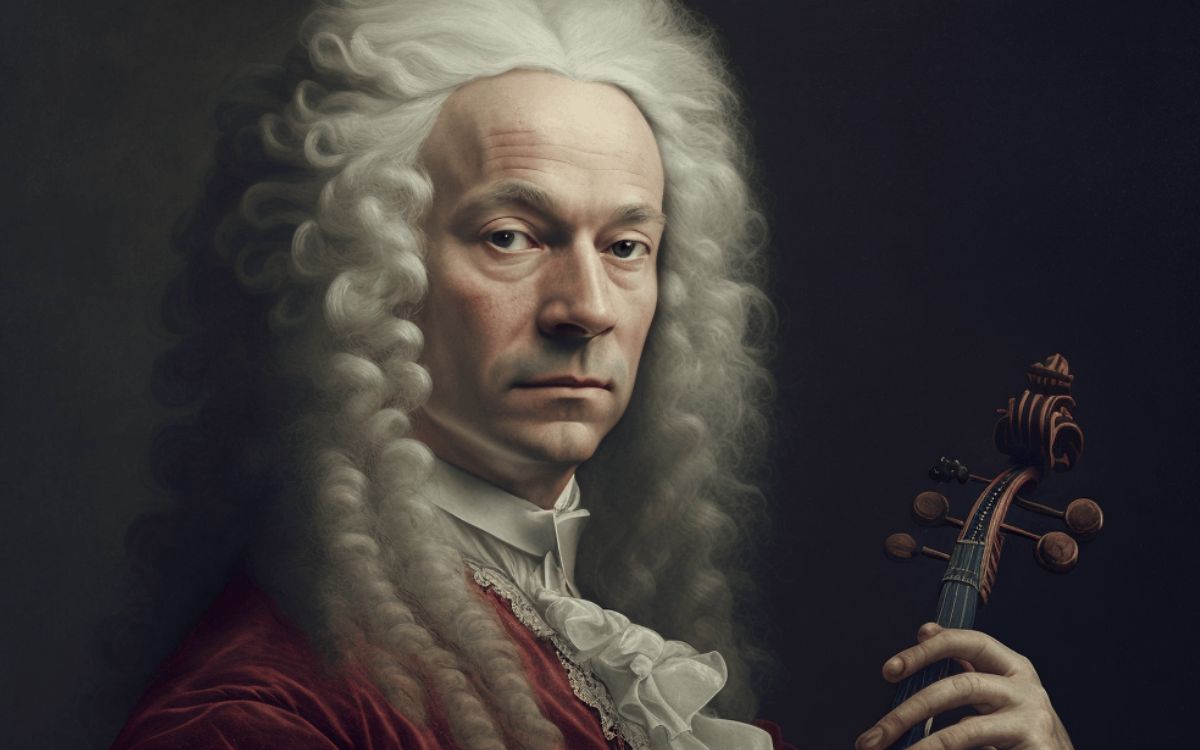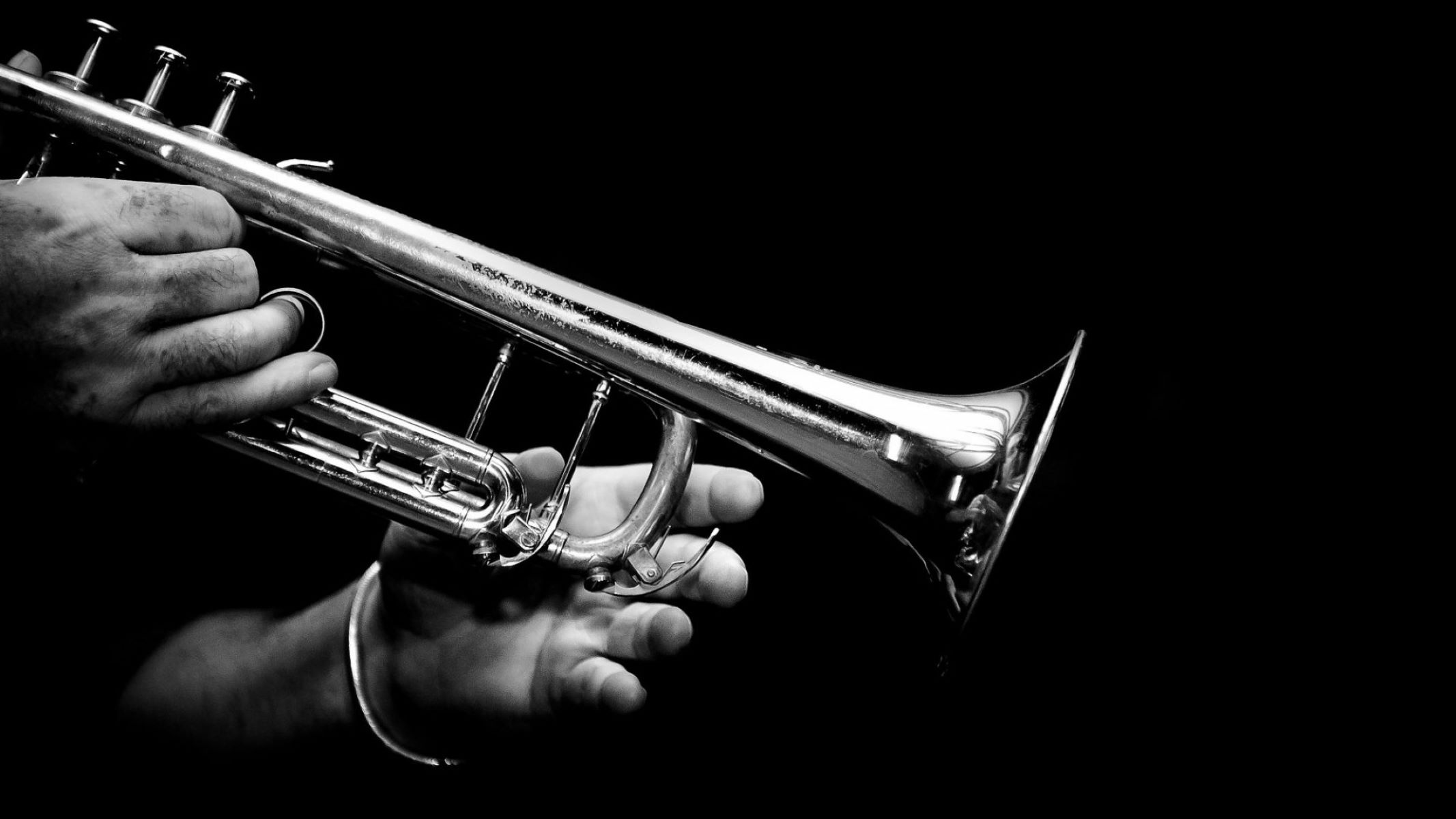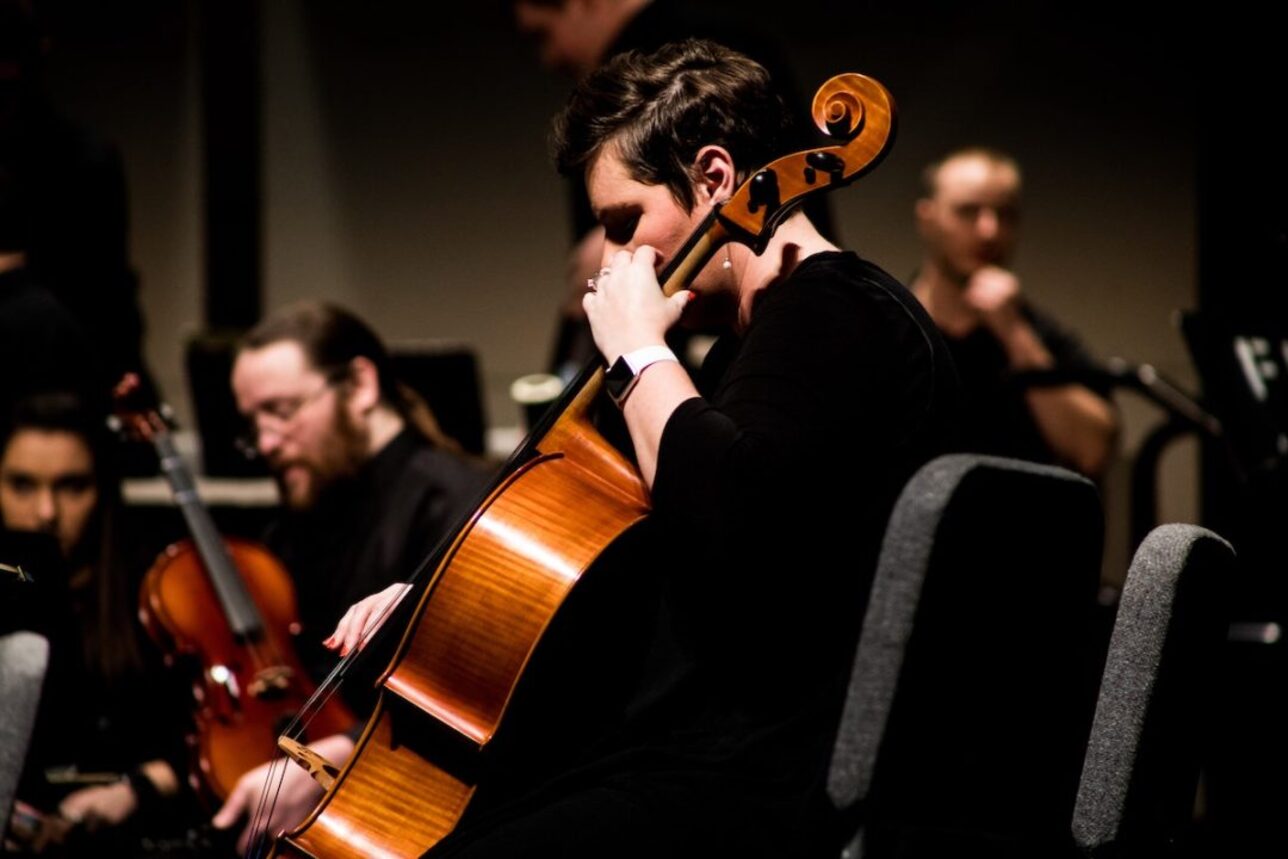Home>Production & Technology>Orchestra>What Is The Most Famous Orchestra Song?


Orchestra
What Is The Most Famous Orchestra Song?
Published: February 24, 2024
Discover the most famous orchestra song and immerse yourself in the captivating world of orchestral music. Explore the beauty and grandeur of orchestral compositions. Unlock the magic of orchestra.
(Many of the links in this article redirect to a specific reviewed product. Your purchase of these products through affiliate links helps to generate commission for AudioLover.com, at no extra cost. Learn more)
Table of Contents
Introduction
Orchestral music has a timeless allure that transcends generations and cultures. The rich tapestry of sound woven by a symphony orchestra has the power to evoke a myriad of emotions, from joy to contemplation, and is often synonymous with grandeur and sophistication. Within this vast repertoire of orchestral compositions, certain pieces have risen to iconic status, captivating audiences worldwide and etching themselves into the annals of musical history. In this article, we will explore some of the most famous orchestra songs that have left an indelible mark on the collective consciousness.
The enduring popularity of these compositions can be attributed to their exceptional melodies, innovative arrangements, and the profound emotions they convey. Each piece represents a unique artistic expression, showcasing the boundless creativity of the composers who crafted them. As we delve into the stories behind these masterpieces, we will uncover the fascinating narratives and inspirations that gave birth to these timeless works of art.
Join us on a journey through the resplendent world of orchestral music as we unravel the stories behind the most famous orchestra songs, each a testament to the enduring power of musical expression.
Beethoven's Symphony No. 5
Beethoven's Symphony No. 5 stands as a towering monument in the realm of orchestral music, its opening motif instantly recognizable to music enthusiasts and casual listeners alike. Composed between 1804 and 1808, this symphony represents a pinnacle of Beethoven's artistic prowess and a watershed moment in the evolution of classical music.
The symphony opens with four emphatic notes, famously known as "short-short-short-long," a motif that has become synonymous with suspense and drama. This iconic motif permeates the entire composition, serving as a unifying thread that weaves through the four movements, creating a sense of cohesion and thematic continuity.
The first movement, Allegro con brio, unleashes a torrent of energy and urgency, propelling the listener into a tumultuous musical journey. The relentless rhythmic drive and the interplay of contrasting themes imbue this movement with a sense of dynamism and tension, showcasing Beethoven's mastery of musical structure and emotional depth.
Following the tempestuous first movement, the symphony transitions into the serene Adagio, a tranquil oasis that provides a moment of respite amidst the storm. Here, Beethoven demonstrates his ability to evoke profound introspection and emotional introspection, as the music meanders through delicate melodies and poignant harmonies.
The symphony then surges into the Scherzo, a lively and spirited movement that brims with exuberance and rhythmic vitality. Beethoven's deft orchestration and inventive use of musical motifs infuse this movement with an infectious energy, captivating the listener with its playful dynamism.
Finally, the symphony culminates in the triumphant Allegro, a grand finale that exudes a sense of triumph and jubilation. The resounding culmination of themes and motifs in this movement evokes a profound sense of resolution and fulfillment, leaving an indelible impression on the listener.
Beethoven's Symphony No. 5 is a testament to the enduring power of orchestral music, its timeless appeal transcending barriers of time and culture. Through its innovative use of motifs, masterful orchestration, and emotional depth, this symphony continues to captivate audiences and inspire awe with its profound musical narrative.
Tchaikovsky's 1812 Overture
Tchaikovsky's 1812 Overture stands as a monumental and iconic composition within the realm of orchestral music. Composed in 1880 to commemorate Russia's defense against Napoleon's invading Grande Armée, this magnum opus exudes a grandeur and majesty that has enthralled audiences for generations.
The overture opens with a solemn introduction, evoking a sense of foreboding and impending conflict. The brooding melodies and ominous brass fanfares set the stage for the tumultuous events that are about to unfold, transporting the listener to the heart of a historic battle.
As the overture progresses, Tchaikovsky masterfully weaves a tapestry of musical motifs that encapsulate the ebb and flow of warfare, from moments of solemn reflection to the thunderous roar of cannon fire. The symphonic depiction of the Battle of Borodino, a pivotal confrontation in the Napoleonic Wars, unfolds with gripping intensity, as the orchestra conjures a vivid sonic landscape that portrays the chaos and heroism of the battlefield.
One of the most striking elements of the 1812 Overture is the incorporation of actual cannon fire and church bells, adding a visceral and immersive dimension to the performance. These unconventional instruments, along with the resplendent orchestration and soaring melodies, imbue the overture with a sense of spectacle and grandiosity, transporting the audience to the heart of the historic conflict.
The climactic finale of the 1812 Overture is a tour de force of musical exuberance, as the orchestra unleashes a triumphant crescendo that reverberates with unbridled fervor. The resounding peals of the church bells and the thunderous roar of the cannons culminate in a breathtaking crescendo, symbolizing Russia's hard-won victory and the jubilation of the people.
Tchaikovsky's 1812 Overture stands as a testament to the enduring power of orchestral music to capture historical narratives and evoke profound emotions. Its evocative portrayal of a pivotal moment in history, combined with its grandiose orchestration and dramatic flair, has solidified its place as one of the most revered and celebrated compositions in the orchestral repertoire. With each triumphant performance, the 1812 Overture continues to enrapture audiences with its timeless depiction of valor, resilience, and the indomitable spirit of a nation.
Mozart's Symphony No. 40
Mozart's Symphony No. 40, often referred to as the "Great G minor Symphony," stands as a crowning jewel in the illustrious repertoire of the prolific composer. Composed in 1788 during a period of remarkable creative fervor, this symphony embodies the essence of Mozart's unparalleled genius and has captivated audiences with its profound emotional depth and exquisite craftsmanship.
The symphony opens with a sense of brooding introspection, as the haunting melody unfolds against a backdrop of melancholic harmonies. The striking use of the G minor key imbues the composition with a sense of dramatic urgency and emotional poignancy, setting the stage for a musical journey that traverses the depths of human emotion.
As the first movement, Molto allegro, unfolds, Mozart showcases his mastery of musical structure and thematic development. The relentless forward momentum and the interplay of contrasting motifs create a sense of tumultuous energy, drawing the listener into a whirlwind of emotional intensity. The symphony's first movement is a tour de force of musical virtuosity, as Mozart weaves a tapestry of melodic intricacies and harmonic richness that leaves an indelible imprint on the listener's soul.
The Andante con moto, the second movement of the symphony, provides a stark contrast to the tempestuous fervor of the first movement. Here, Mozart invites the listener into a world of serene beauty and introspective contemplation. The delicate interplay of strings and woodwinds evokes a sense of profound longing and tender introspection, as the music unfolds with a grace and elegance that is quintessentially Mozartian.
The symphony then surges into the Menuetto, a spirited and lively movement that brims with exuberance and rhythmic vitality. Mozart's deft orchestration and inventive use of musical motifs infuse this movement with an infectious energy, captivating the listener with its playful dynamism and rhythmic intricacies.
Finally, the symphony culminates in the Allegro assai, a grand finale that exudes a sense of urgency and unbridled fervor. The resounding culmination of themes and motifs in this movement evokes a profound sense of resolution and emotional fulfillment, leaving an indelible impression on the listener.
Mozart's Symphony No. 40 stands as a testament to the enduring power of orchestral music, its timeless appeal transcending barriers of time and culture. Through its innovative use of motifs, masterful orchestration, and emotional depth, this symphony continues to captivate audiences and inspire awe with its profound musical narrative.
Dvořák's Symphony No. 9, "From the New World"
Dvořák's Symphony No. 9, also known as "From the New World," stands as a crowning achievement in the realm of orchestral music, capturing the essence of American landscapes and folk melodies while reflecting the composer's Czech heritage. Composed during Dvořák's tenure in the United States from 1892 to 1895, this symphony embodies a rich tapestry of musical influences, evoking a sense of nostalgia, longing, and boundless optimism.
The symphony opens with a sense of profound introspection, as the haunting melodies of the English horn and clarinet unfold against a backdrop of lush orchestration. The evocative themes and sweeping harmonies transport the listener to the heart of the American frontier, conjuring images of vast prairies, majestic mountains, and the untamed spirit of the wilderness. Dvořák's masterful use of orchestral colors and thematic development imbues the composition with a sense of grandeur and emotional depth, setting the stage for a musical odyssey that resonates with audiences across the globe.
As the symphony progresses, Dvořák weaves a rich tapestry of musical motifs that pay homage to the diverse cultural tapestry of America. The symphony's second movement, marked as the Largo, unfolds with a sense of poignant introspection, as the plaintive melodies evoke a profound sense of longing and nostalgia. The tender lyricism and emotive depth of this movement reflect Dvořák's deep appreciation for the spiritual and folk traditions of America, infusing the symphony with a sense of cultural resonance and emotional authenticity.
The third movement, the Scherzo, bursts forth with rhythmic vitality and exuberance, capturing the vivacious spirit of American folk music. The lively dance rhythms and infectious melodies propel the listener into a whirlwind of joyous energy, showcasing Dvořák's ability to infuse the symphony with dynamic contrasts and vibrant musical textures. The symphony's resplendent finale, the Allegro con fuoco, unfolds with a triumphant fervor, as the orchestra unleashes a breathtaking crescendo that reverberates with unbridled passion and exuberance. The resounding culmination of themes and motifs in this movement evokes a profound sense of triumph and jubilation, leaving an indelible impression on the listener.
Dvořák's Symphony No. 9, "From the New World," stands as a testament to the enduring power of orchestral music to capture the essence of cultural identity and evoke profound emotions. Its evocative portrayal of the American landscape, combined with its grandiose orchestration and emotive depth, has solidified its place as one of the most revered and celebrated compositions in the orchestral repertoire. With each transcendent performance, the "New World Symphony" continues to enrapture audiences with its timeless depiction of hope, longing, and the indomitable spirit of a nation.
Vivaldi's The Four Seasons
Vivaldi's magnum opus, The Four Seasons, stands as a pinnacle of orchestral composition, captivating audiences with its evocative portrayal of the natural world and the myriad emotions it encompasses. Composed in the early 18th century, this iconic work comprises four violin concertos, each dedicated to a different season of the year: Spring, Summer, Autumn, and Winter. Vivaldi's innovative and groundbreaking approach to musical storytelling, combined with his profound understanding of the interplay between music and nature, has immortalized The Four Seasons as an enduring masterpiece that continues to enthrall listeners across the globe.
The opening notes of "Spring" herald a vibrant awakening, as the solo violin evokes the jubilant spirit of the season through cascading arpeggios and exuberant melodies. Vivaldi's masterful use of musical motifs and evocative harmonies paints a vivid sonic landscape, conjuring images of blooming flowers, chirping birds, and the gentle caress of a refreshing breeze. The interplay between the soloist and the ensemble mirrors the dynamic interplay of life bursting forth in nature, captivating the listener with its effervescent energy and radiant optimism.
As the seasons transition to "Summer," Vivaldi's composition takes on a more fervent and intense character, mirroring the sweltering heat and tempestuous storms that define this time of year. The solo violin weaves a tapestry of virtuosic passages and impassioned melodies, evoking the relentless heat of the sun and the tumultuous fury of a summer storm. The orchestra, in turn, echoes the soloist's fervor, creating a rich and dramatic soundscape that immerses the listener in the volatile beauty of the season.
With the arrival of "Autumn," Vivaldi's composition undergoes a metamorphosis, embracing a more contemplative and introspective tone. The solo violin evokes the bountiful harvest and the wistful nostalgia that permeates the air as nature prepares for the impending winter. Vivaldi's melodic ingenuity and poignant harmonies capture the essence of autumnal abundance, inviting the listener to revel in the rich tapestry of colors and emotions that define this transitional season.
Finally, as the year draws to a close, "Winter" descends with a haunting and chilling grandeur. The solo violin conjures images of icy landscapes and biting winds, its frenetic passages and stark harmonies painting a vivid portrait of nature's icy grip. The orchestra, in turn, envelops the listener in a symphony of frost and fury, evoking the raw power and stark beauty of winter in all its unyielding majesty.
Vivaldi's The Four Seasons stands as a testament to the enduring power of orchestral music to capture the essence of the natural world and evoke profound emotions. Its timeless appeal, innovative storytelling, and evocative musical language have solidified its place as one of the most revered and celebrated compositions in the orchestral repertoire. With each transcendent performance, The Four Seasons continues to enrapture audiences with its timeless depiction of the symbiotic relationship between music and nature, perpetuating its legacy as a masterpiece for the ages.











